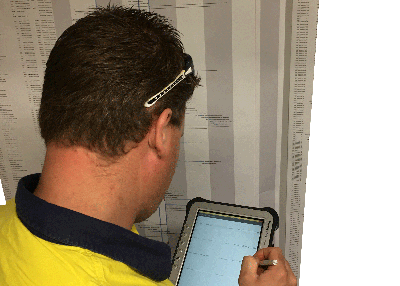The UNNECESSARY Hidden Costs in Shutdowns.

We are into our third decade with shutdown management. One of the things that always repeats its self and makes us scratch our heads is the constant reinvention of the wheel.
Most of all we often hear the phrase, “We will improve on this next time”. Only to see the same things with the same mistakes repeated time and time again.
Even teams who have allocated time for a shutdown review rarely capitalise on the findings and the opportunities to improve at the next event. So why is this so? Why do we keep trying to overcome the same hurdles and deal with the same mistakes event after each event?
Some might argue that this is not the case, but they would belong to a very small group of successful practitioners and far from the norm within the shutdown industry.
As profit margins lean out, and costs impact more and more, we no longer have the luxury of not worrying about wasteful practices that were generally hidden under the huge cash flows of years gone by.
Shutdowns can be separated into two areas of cost before applying other sub categories within those areas. One of these areas often falls outside the standard business process or work management and carries with it a substantial sting in the tail pertaining to cost control. It is this second element that if managed properly can yield rewards in cost, efficiency, safety, and control.
Most work management road maps outline the fundamentals of the shutdown process, some are much better than others and finding the right balance between detail and informed direction can be challenging. But starting with two hi levels we can quickly determine what we need to do in order to make sure we are optimising our efforts. For this reason PalmCrest created a process that captures both elements and when used correctly eliminates unnecessary cost through repeating the same mistakes over and over.
Most shutdown models capture the fundamentals and enable a reasonably successful campaign. Fewer capture the variables and often its these variables that are processed informally or by chance.
The PalmCrest method identifies all fixed planning requirements as the first level of control.
Typically they are things like Org structure, Long lead items, contracts, required equipment, manning and so forth. As previously stated this level is pretty fundamental and is captured by most standard shutdown processes.
The second level is traditionally left to individuals to follow up as part of their responsibilities. Not listing them or tracking them is where we run into delays and cost as we approach the execution phase of the shutdown event.
We have learned over many events that getting all the variable requirements in one place is the only way to secure a successful outcome for the over all plan. If the Devil is in the detail then the detail must be collated, managed, executed, and tracked with a formal process.
We measure two main areas with our Shutdown Readiness Programs
Absolutes. These are the fundamentals of Shutdown management, most everyone does this.
Variables. These are the little things that are show stoppers and cripple shut events with stealth.

Lets say we are lifting out some equipment that requires a particular spreader bar with a current engineering cert supplied. Normally we could rely on the contractor to bring the right bar (They have done it before) or we could tell Jeff to contact them.
Since this does not happen every shut then this element is a variable and depending on Jeff, the contractor or luck it may or may not turn up on time. Now lets say this lift is on the Critical Path, what is the cost of the delay if the contractor turns up with the wrong equipment? What is the hidden cost if we do not do the job due to poor planning? And how do we mitigate the 200 odd issues like this that will be part of our shut event this time round but maybe not next time?
Many of these variable elements exist in Supervisors notepads, Planners diaries and Managers spreadsheets. With a little luck and a few emails most of should come together in time to insure the success of the shut event. This seems like normal practice and the management of so many widely spread variables can add stress chaos and uncertainty to any well-structured plan where all the absolutes are already racked packed and stacked.
So how do we deal with the variables?
Our Shutdown Readiness program has a specific area labelled “Action Register” that deals with these elements. We initially expend a large effort to capture everyone’s variables and keep them in one action register. We then prioritise, assign, set target days out from the shutdown and track progress.
Once the shut event is complete we reset the start date for the next event and review our list of Absolutes and Variables, having already compiled this list for the previous event it becomes much easier to just edit, add to, or delete tasks as they arise. This way we are learning and leveraging of past events and limiting the reinvention process each shutdown.
Also lessons learned are instantly turned into tasks and added to the Readiness register for the next event. As simple as this process sounds we have proven time and time again that aprocahing a shutdown event with these two levels, Absolutes and Variables we under pin our own process with a planning safety net that can literally save Tens if not Hundreds of thousands of dollars in costly mistakes for future events.
Click on our Toolbox tab to see more about the PalmCrest Shutdown Readiness process.

